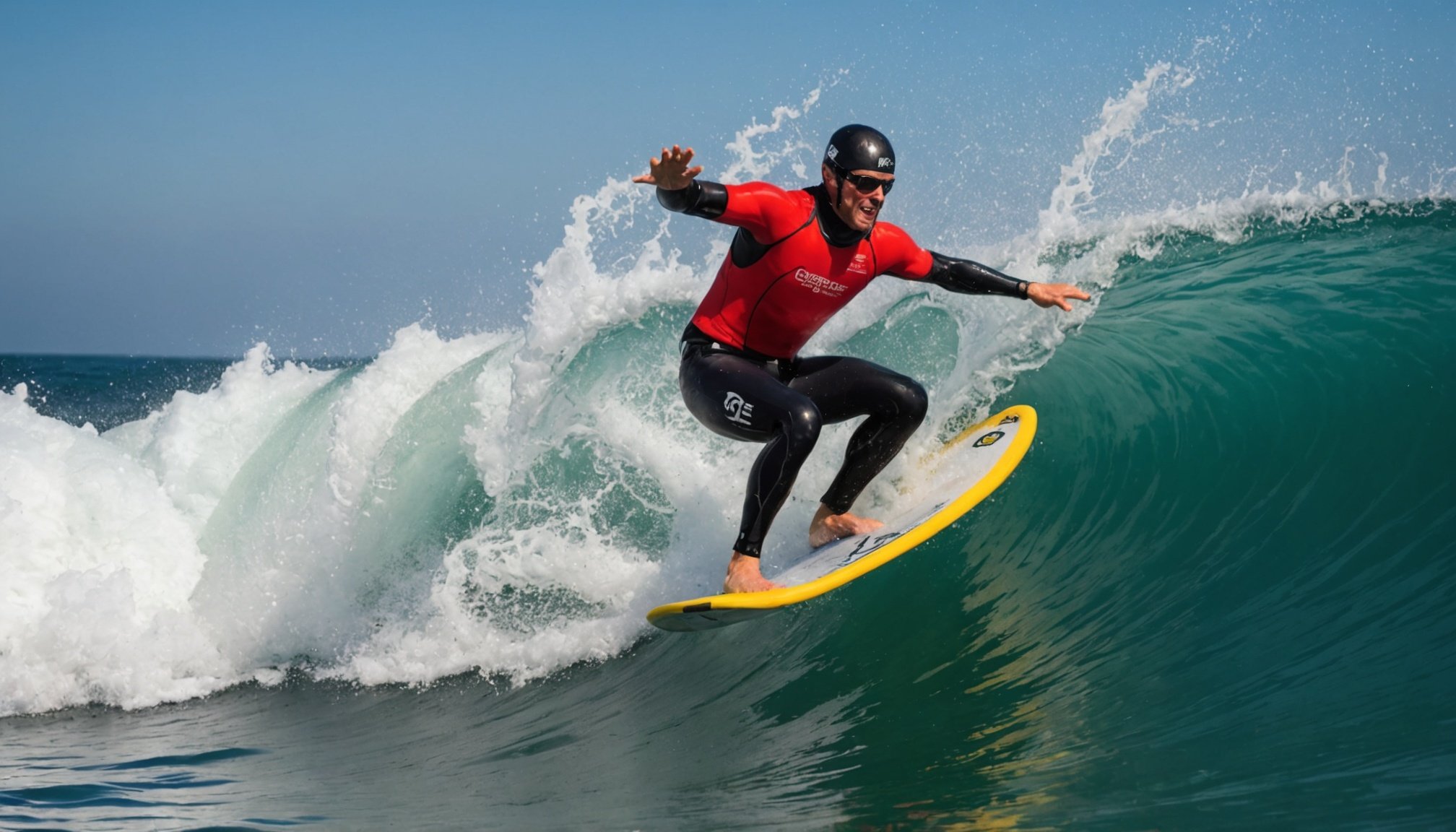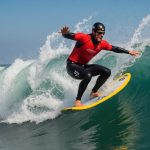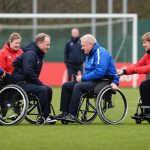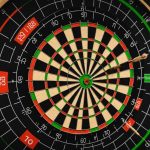Mastering the Waves: Secrets to Balance and Control in High-Speed Bodyboarding Maneuvers
Understanding the Basics of Bodyboarding
Before diving into the advanced techniques of high-speed bodyboarding, it’s crucial to understand the fundamentals of the sport. Bodyboarding, often referred to as boogie boarding, involves riding waves on a small, rectangular board without standing up. Here are some key basics to get you started:
- Choosing the Right Board: The board you use can significantly impact your performance. Boards like the Bodyboard 500 from Decathlon are designed for both beginners and experienced riders, offering the right balance of stability and maneuverability[2][3].
- Positioning: Learning to position yourself correctly in the water is vital. You need to be able to read the waves and place yourself where the wave will lift you up. This involves understanding the different types of waves, such as beach breaks, point breaks, and reef breaks.
- Paddling: Effective paddling is essential for catching waves. It involves using your hands to propel yourself through the water, timing your strokes to match the speed of the wave.
Reading the Waves
Reading the waves is an art that separates good surfers from the best. Here’s how you can improve your wave-reading skills:
Additional reading : Boosting Shooting Precision: Strategies for Biathletes to Excel Under Competitive Pressure
Types of Waves
- Beach Breaks: These waves break over sandy bottoms and are generally safer for beginners. They can be unpredictable but offer a lot of room for practice.
- Point Breaks: These waves break around a point of land, often providing longer rides. They are favored by experienced surfers due to their consistency and power.
- Reef Breaks: These waves break over coral reefs and can be very powerful. They are best left to experienced surfers due to the risk of injury from the reef.
Wave Size and Shape
- Wave Size: The size of the wave is critical. Smaller waves are easier to catch but may not offer the same thrill as larger, more powerful waves.
- Wave Shape: The shape of the wave can tell you a lot about its behavior. A wave with a steep face is likely to be faster and more challenging to ride.
Catching Waves
Catching waves is the heart of bodyboarding. Here are some tips to help you catch waves effectively:
Timing and Positioning
- Timing: The key to catching a wave is timing. You need to start paddling just as the wave begins to lift you up.
- Positioning: Make sure you are in the right spot on the wave. For bodyboarding, this usually means being slightly ahead of where the wave starts to break.
Paddling Technique
- Hand Placement: Keep your hands facing the wave with your fingers spread wide.
- Stroke Timing: Match your paddle strokes to the speed of the wave. As the wave starts to lift you, give a few strong strokes to catch up.
High-Speed Maneuvers
Once you’ve mastered the basics of catching waves, it’s time to move on to high-speed maneuvers. Here are some secrets to balance and control:
Topic to read : Enhancing Dart Precision: The Best Tech Gadgets to Boost Your Game
Maintaining Speed
- Body Position: Keep your body as streamlined as possible. Lie flat on the board with your head down and your arms extended.
- Weight Distribution: Shift your weight to maintain balance. As you pick up speed, you may need to adjust your position to stay centered on the board.
Performing Turns
- Initiating Turns: To turn, shift your weight onto one side of the board and use your arms to steer. The key is to make smooth, gradual movements.
- Re-entry: A re-entry involves riding the wave back up the face after performing a turn. This requires maintaining speed and control as you ride back up the wave.
Advanced Techniques
For those looking to take their bodyboarding to the next level, here are some advanced techniques:
Tube Riding
- Finding the Tube: The tube is the hollow part of the wave as it breaks. To ride the tube, you need to be in the right position and have enough speed to stay ahead of the wave.
- Staying in the Tube: Once inside, maintain your speed and adjust your position to stay centered.
Airs and Tricks
- Airs: Performing airs involves launching off the lip of the wave and landing back on the board. This requires a lot of practice and control.
- Tricks: Tricks like 360s and re-entries add an extra layer of complexity but can be incredibly rewarding.
Practical Tips and Advice
Here are some practical tips and advice from experienced surfers:
Learning from Mistakes
- “The best way to learn is by making mistakes. Don’t be afraid to fall off; it’s all part of the learning process,” says Sam, a professional bodyboarder[1].
Staying Focused
- “Focus on the wave and stay in the moment. Don’t get distracted by what’s happening around you,” advises Kelly Slater, a legendary surfer.
Choosing the Right Spot
- “The spot you choose can make all the difference. Look for waves that match your skill level and the conditions of the day,” recommends a surf instructor at a surf camp.
Table: Comparing Different Types of Bodyboards
| Board Type | Description | Best For | Price Range |
|---|---|---|---|
| Funboard | Versatile, all-around board | Beginners to intermediate | €500-€700 |
| Shortboard | High-performance, maneuverable | Experienced surfers | €700-€1,000 |
| Longboard | Stable, easy to catch waves | Beginners | €400-€600 |
| Fishboard | Fast, agile, for small waves | Intermediate to advanced | €500-€800 |
Detailed List: Steps to Master High-Speed Bodyboarding Maneuvers
-
Step 1: Master the Basics
-
Learn to paddle effectively.
-
Practice catching small waves.
-
Understand wave types and how to read them.
-
Step 2: Build Speed and Control
-
Focus on maintaining a streamlined body position.
-
Practice shifting weight to adjust balance.
-
Learn to initiate smooth turns.
-
Step 3: Practice Advanced Techniques
-
Try tube riding by positioning yourself correctly and maintaining speed.
-
Practice airs and tricks in safer conditions.
-
Step 4: Stay Focused and Patient
-
Keep your focus on the wave and stay in the moment.
-
Be patient with your progress; mastering high-speed maneuvers takes time.
-
Step 5: Learn from Mistakes
-
Analyze your mistakes to improve your technique.
-
Don’t be afraid to fall off; it’s part of the learning process.
Mastering high-speed bodyboarding maneuvers is a journey that requires dedication, patience, and practice. By understanding the basics, reading the waves effectively, and practicing advanced techniques, you can take your bodyboarding to the next level. Remember to stay focused, learn from your mistakes, and always choose the right spot for your skill level.
As Sam from the surf club video aptly puts it, “It’s really about finding the right wave and being able to perform the maneuvers in the critical parts of the wave. It’s not just about the speed; it’s about control and balance”[1].
So, grab your board, head to the beach, and start riding those waves. With time and practice, you’ll be performing high-speed maneuvers like a pro.











